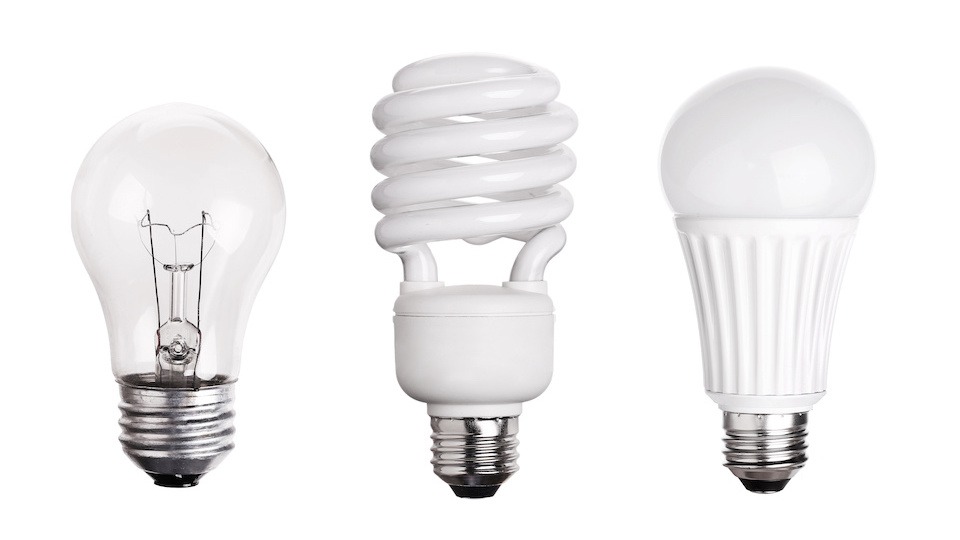For the first time in American political history, the Democratic presidential contenders participated in a town-hall-style meeting that was focused on a single issue. The conference ran for over seven hours (!!!) and the issue on the table was…the climate. The long meeting left lots of room for in-depth conversations rather than the typical sound bytes we’ve all come to expect from our politicians and, somewhat surprisingly, one of the topics that came up was…light bulbs. Thomas Edison invented the light bulb in 1879, and a lot has changed since then. But we can put history and politics aside here because this article by my team at UpWellness covers what you need to know about the health and environmental impact of light bulbs with a focus on LED technology. Shine on
– JL
Figuring out the right kind of light bulbs to buy and install in your home could not only help save you money on your power bill but could help save the environment as well. Or at least, that’s what the manufacturers of LED bulbs want you to believe. It’s time to pull back the curtain on light bulbs and determine once and for all how they’re impacting your health.
What are the different kinds of light bulbs?
If you are new to the world of light bulbs and related health concerns, the lingo and differences between the bulbs can get a little confusing. Here is a breakdown of the most common bulbs you’ll come across and how to tell what’s in your home.
Incandescent bulbs: These light bulbs are the least energy-efficient option, but generally produce a warmer light and are slightly cheaper than their green cousins. However, they produce harmful carbon dioxide and are being phased out by various governmental regulations.
Fluorescent and Compact Fluorescent (CFL): Slightly better for energy consumption, CFLs are about 75% more energy-efficient than incandescent and last for 8,000 hours. However, they are harsh white lights and tend to wash out your space. Plus, these bulbs contain mercury and can be incredibly dangerous if broken.
LED: LED bulbs are now seen as the gold standard in energy-efficient lighting as they last over 25,000 hours and emit a cool, white glow without heating up the bulb.
Light bulb related health concerns
One study, published in the journal Environmental Science and Technology in 2012 determined, “The CFLs and LEDs have higher resource depletion and toxicity potentials than the incandescent bulb due primarily to their high aluminum, copper, gold, lead, silver, and zinc.” The researchers upheld the viable economic and energy-saving benefits of these greener bulb options but expressed concern over the potentially hazardous nature of their components.
All this to say, the incandescent bulbs’ pure waste of electricity as heat, is a serious environmental concern and must be taken into consideration when deciding which bulbs to purchase. Keep in mind, the above-mentioned study is nearly 10 years old, and there has been a dramatic increase in the development of new lighting technology over the past decade. This is especially noticeable in the realm of LED bulbs, as consumers have continued to seek ways to minimize energy waste and have encouraged developers to come up with better options.
What about electronics?
It is a well-known fact that LEDs are responsible for the harmful blue light that is emitted by your phone or computer screen. Exposure to this light, especially before bed, has been shown to disrupt the body’s production of melatonin (the sleep hormone) and interfere with the natural sleep cycle. This interferance can cause insomnia and restlessness. The limited blue light emitted by traditional bulbs from lamps or overhead lighting is not enough to impact your health; however, the damaging effects of constant exposure to blue light on electronics is a cause for concern.
Experts recommend ceasing all electronic use 1-2 hours before bed to help signal to your body that it is time to sleep and reading a physical book or engaging in other stress-relieving activities to help you wind down. If you spend a lot of time working on the computer, take periodic breaks to give your eyes time to rest and focus on something in the distance. This will help reduce eye strain and minimize the harmful effects of blue light.
It does seem that LEDs are taking over as the bulb of choice as more traditional incandescent bulbs go the way of the VHS. This is a good thing, as they can genuinely save money on energy costs and reduce carbon emission. However, in order to maximize benefit, it is imperative that you practice safe and proper disposal techniques, i.e. stop throwing spent LEDs in the trash and recycle them instead.
LEDs are the best option currently but keep an eye out for even greener innovations that could remedy many of the concerns associated with LED bulb production.
-The UpWellness Team









